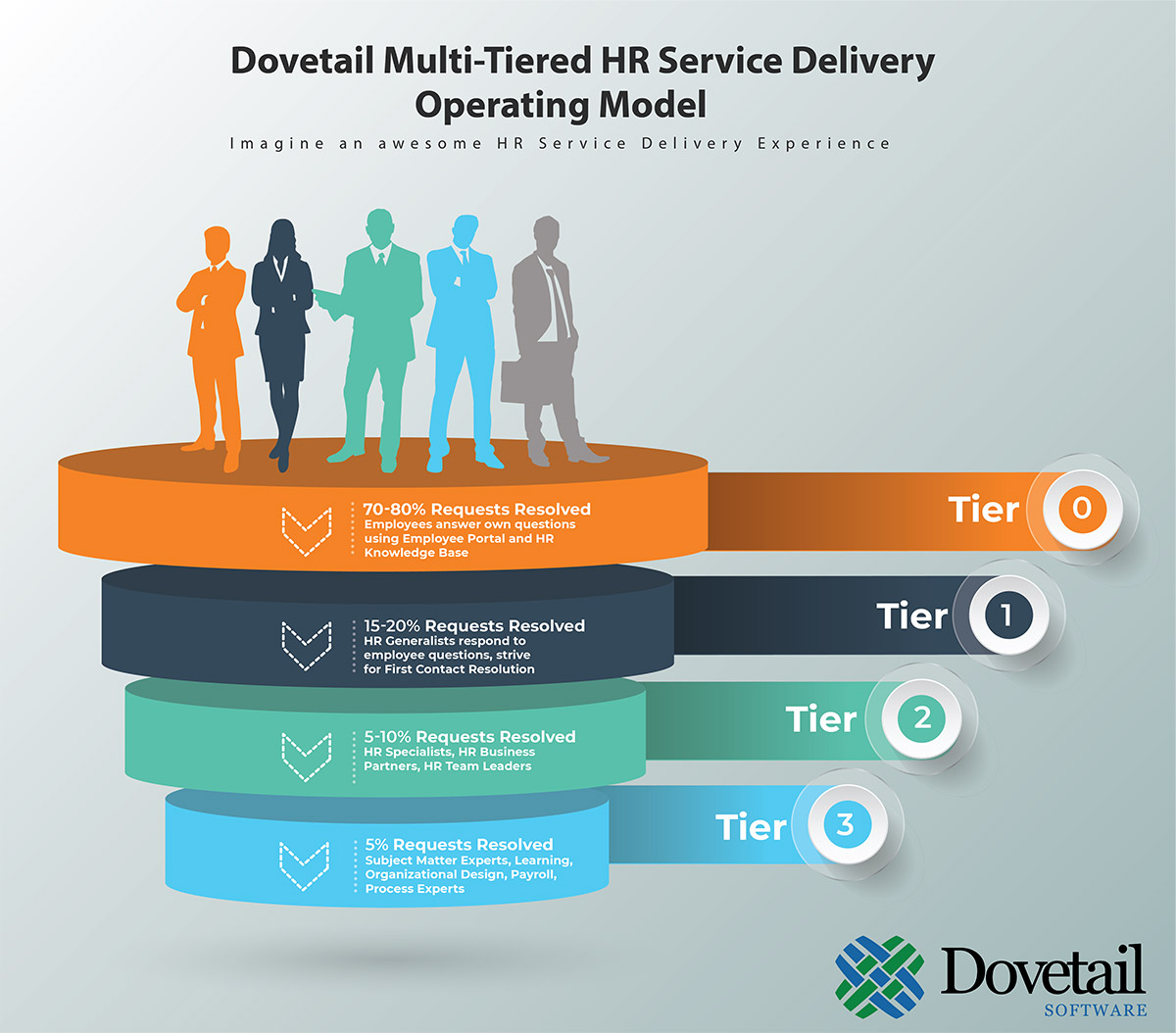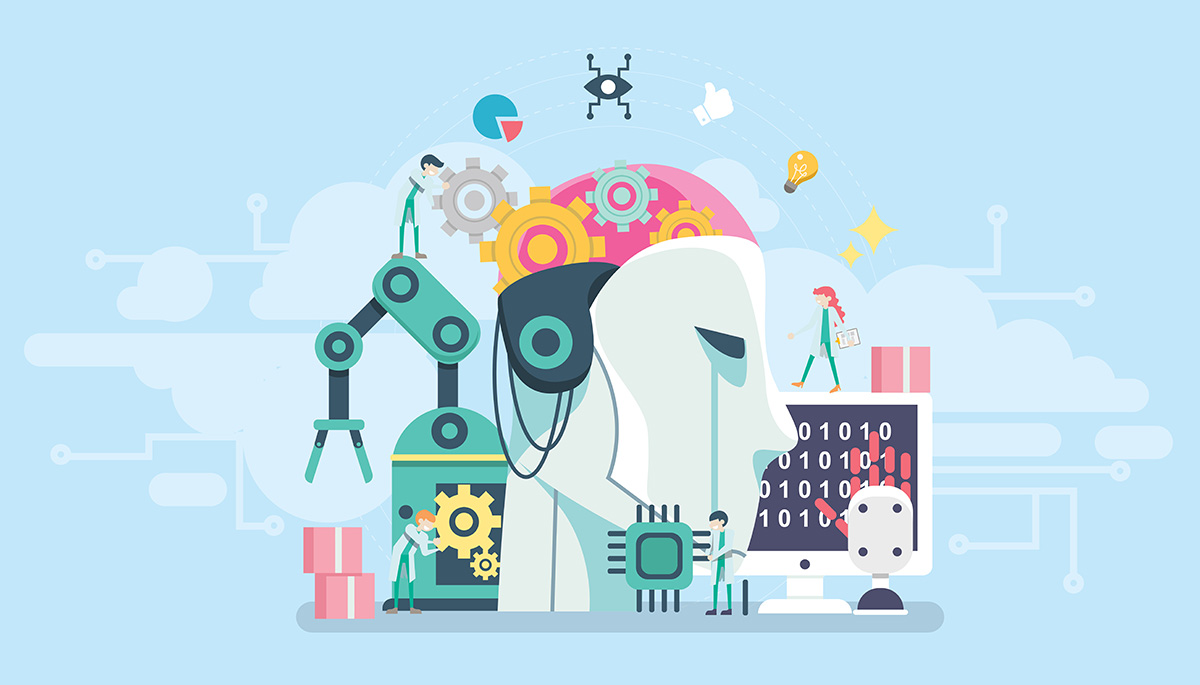Diagram 1 - Dovetail Multi-Tiered HR Service Delivery Operating Model
HR Service Delivery is the HR function responsible for providing employees and line managers with a wide range of services, including (among many others) payroll processing, employee benefits and onboarding.
Central to the role of HR Service Delivery is managing, responding to and providing resolutions to employee questions, inquiries or requests. This employee request management service is also known as HR case management, where the case is the employee’s request that needs resolving.
There are two main ways HR Service Delivery is organised to provide this service.
- The traditional approach is for HR to receive employee requests, questions, and inquiries into an HR team. As inquiries are received (usually via telephone or email) HR responds accordingly, using, until recently, Shared Inboxes and spreadsheets to manage, track and monitor employee cases.
- A second, more modern approach, and one which is increasingly being adopted by enterprise organizations, is a Multi-tiered* solution based on Ulrich’s ‘three-legged stool’ model of HR service delivery. In this model employee requests and inquiries are ‘escalated’ through service delivery ‘tiers’, usually from Tier 0 to Tier 2 or 3. Tier 0 represents employees using self-service technology to answer their own questions, Tier 1 is the HR Shared Service team dealing with employee inquiries, whilst Tiers 2 and 3 represents Subject Matter Experts (HR business partners, HR centres of expertise) who deal with more complex employee cases that are escalated to them from Tier 0 or Tier 1 (See Diagram 1 above).
*The Multi-tiered approach is usually applied when an organization uses a Shared Service Center to deliver HR services. Sierra Cedar in their Sierra Cedar 2019 - 2020 HR Systems Survey White Paper, 22nd Annual Edition, have identified three types of Shared Service Center; Centralized, Distributed and Hybrid.
So what’s driving this shift from the antiquated ‘traditional’ approach to the modern ‘tiered’ system?
Since time immemorial senior level management have placed continual demands on HR to cut service delivery costs, improve efficiency of operations and increase productivity. Nothing new here. But what is new, is that HR are now able to take advantage of the recent (and rapid) innovation in technology to substantially reduce the total cost of ownership of technology services, optimize HR operations and increase efficiency of services delivered. The new technology solutions, built on SaaS platforms, are revolutionizing how HR delivers services to their employees.
“That’s great!” I hear you say. But there’s more to it than efficiency and operations improvements. There’s now an increasing demand for HR to deliver outstanding experiences to their employees. This is driven by a number of factors including;
- Employees’ heightened expectations of the technology experience in the workplace (which is directly linked to their experience of using Apps such as Google, Facebook and Amazon in their consumer lives)
- Workforce demographic changes, such as the rise of Millennials and Gen Z as a proportion of the workforce
- The need to retain staff, as there is a scarcity of talent available in the employee marketplace
All this means HR have the additional pressure of having to find HR service delivery solutions that create exceptional employee experiences.
Technology companies have responded to these demands, developing, designing and building HR Case Management, Employee Portal and Knowledge Management technology solutions. Purpose-built for HR, these solutions are crucial ‘enablers’ for the modern Multi-tiered HR Service Delivery model of today. Yes you can use outdated solutions such as Shared Inboxes and spreadsheet trackers to manage employee request services, but it’s cumbersome, leads to inefficient work practices, a lack of HR work visibility and is, quite frankly, a hassle.
Recently I spoke to one of our customers about why they made the transition to a Cloud-based HR Case Management solution. Peter Fennema, Executive Director of HRIS, University of Southern California, and a Dovetail customer since 2014, is responsible for a team of HR professionals that provide support to over 20,000 employees. He told me, “When USC implemented a HR Service Center there became one central point where employees could call in to resolve their inquiries, and this triggered a need for an HR case management system. The HR Services team had been tracking everything with spreadsheets, which was inefficient and difficult to manage, so they needed a system for tracking and they needed it really fast. There was no system in place to manage this new way of operating HR service delivery.” Peter’s message was clear. HR Service Centres are providing a better way to organise HR resources for better service to employees, but they need a smart technology to enable this new approach.
“When USC implemented a HR Service Centre there became one central point where employees could call in to resolve their inquiries, and this triggered a need for an HR case management system. The HR Services team had been tracking everything with spreadsheets, which was inefficient and difficult to manage, so they needed a system for tracking and they needed it really fast. There was no system in place to manage this new way of operating HR service delivery.”
Peter Fennema, Executive Director of HRIS, University of Southern California
Top 5 benefits of HR Service Delivery Technology?
HR Service Delivery technology, designed with the sole purpose of helping HR deliver services to employees, with functionality such as HR Case Management, Employee Portal, Knowledge Base, Customer Relationship Management database design, Service Level Agreement (SLA) management (read my top 5 benefits of SLAs in HR Service Delivery here) and advanced Analytics and Reporting, provides a number of benefits:
- Self-service capabilities meet employees (in particular Millennials and Gen Z) expectations for consumer-grade technology experiences
- Employees become more engaged in the process of service delivery due to greater transparency of their cases, and a more effective communication platform (see our Employee Portal page)
- The monitoring and tracking of employee interactions means HR is guided by metrics and never loses track of employee cases
- Reporting and analytics features provide total visibility of HR work, which enables HR to continually improve employee service management
- HR becomes more cost-effective as the technology enables the optimization of HR Service Delivery
I hope you found this post helpful. Please get in touch, if you would like to find out more about how HR Case Management, Employee Portal and Knowledge Management technology can help HR Service Delivery create great employee experiences for your business.




























